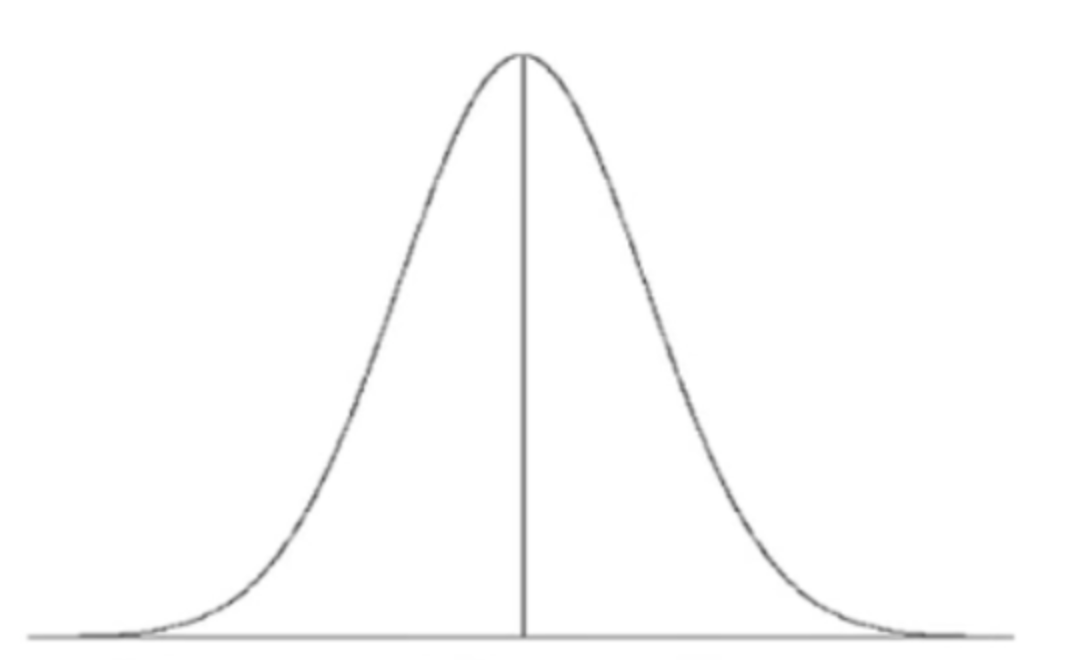Table of Contents |
The normal distribution is one of the most important ideas in all of statistics. Normal distribution may also be called a Gaussian distribution, after the mathematician Carl Friedrich Gauss, or a bell curve.
You may have heard of the term bell curve before. Does that refer to shape, center, or spread? A bell curve refers to shape. When something is called “bell curved” in terms of its shape, it means that it is single-peaked, symmetric. A bell curve looks like this:

|
|
Normal Distribution (a.k.a. Gaussian Distribution) |
In this case, “normal" doesn't mean that it's usual, or always happens, or is typical. "Normal" just means that it's going to be single-peaked and symmetric.
Since the shape of these distributions is always the same, the only thing that's going to be different about varying normal distributions is their center. That is, the only difference is where each normal distribution is placed on the x-axis, and what their spread is (which is also how wide they are).
EXAMPLE
A graph that has a spread of 5 and one that has a spread of 20 will look a little different in shape--the former narrower and the latter wider--but their shapes wouldn't be any different.Because of this, you need a measure of center and a measure of spread. Which measure of center should you use: mean or median? Which measure of spread should you use: standard deviation or IQR?
| Measure of Center and Spread for Normal Distribution | |
|---|---|
|
Measure of Center: Mean |
Measure of Spread: Standard Deviation |
| The mean is the more versatile measure of center. | Because the mean is going to be your measure of center, use the standard deviation as the measure of spread. |
You might ask, “Since the distribution is symmetric, won’t the mean and the median be the same?” You're right! Likewise, the mode is the same as both the mean and the median in this distribution. Therefore, it doesn't really matter if you reference the mean or the median, but typically, you’re going to say that your graph has a specific mean and a specific standard deviation.
To measure center and spread, all you need is:

Sometimes, you'll see this measurement shorthanded this way: N (μ,σ). In this notation, N means the normal distribution, making this is a convenient and compact way of writing the normal distribution.
Source: THIS TUTORIAL WAS AUTHORED BY JONATHAN OSTERS FOR SOPHIA LEARNING. PLEASE SEE OUR TERMS OF USE.